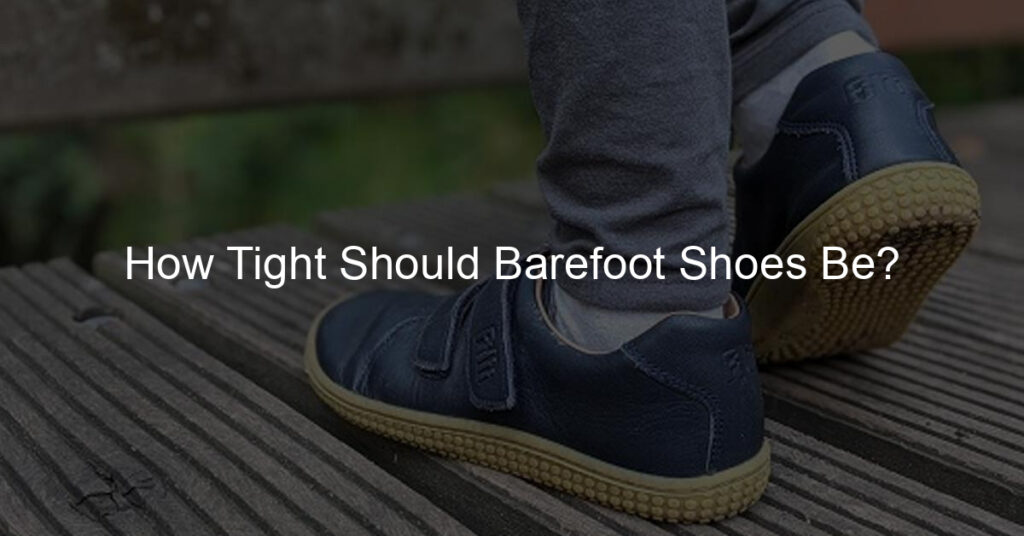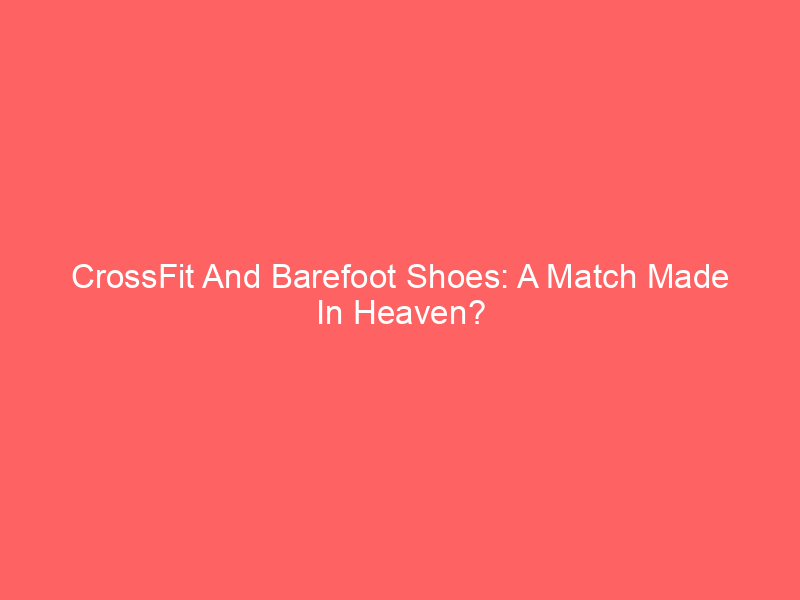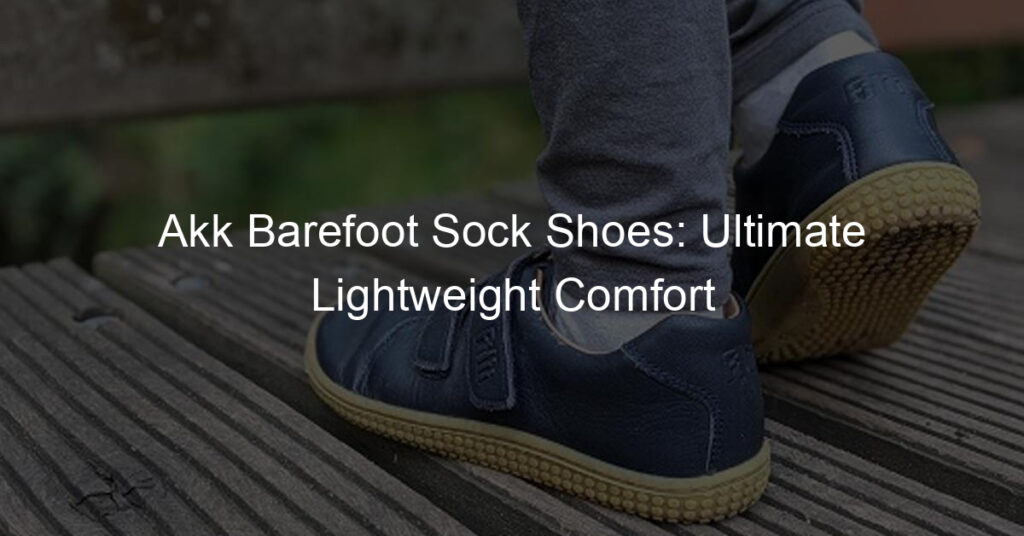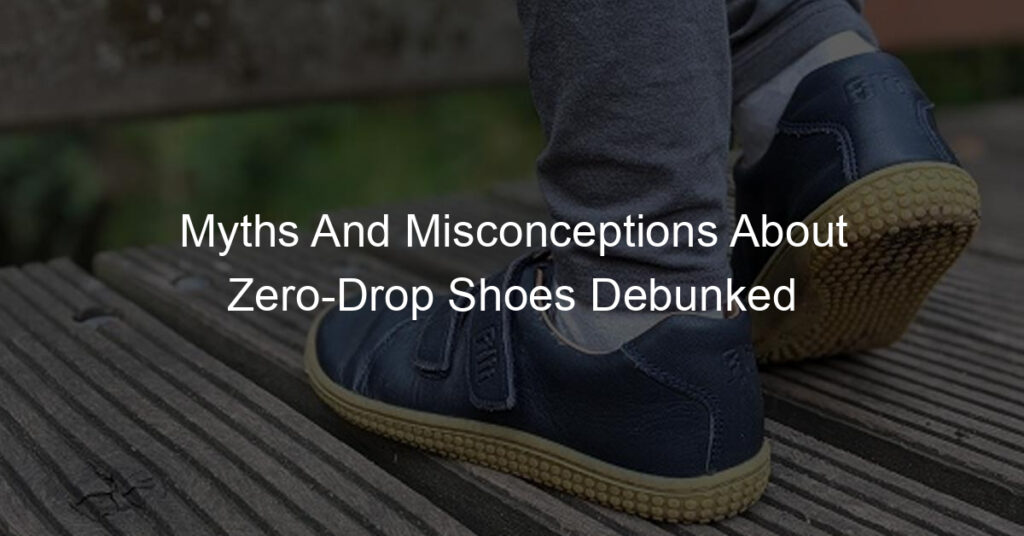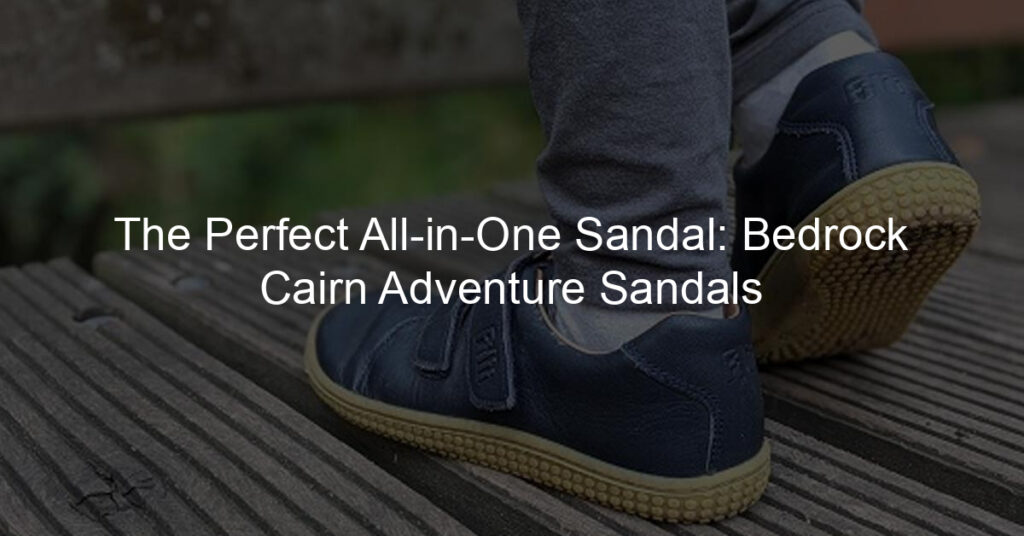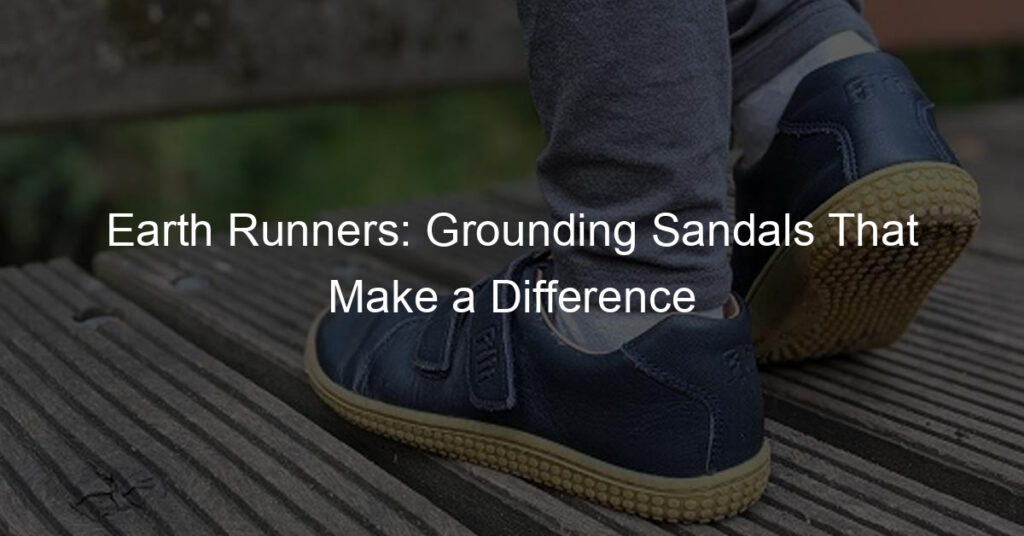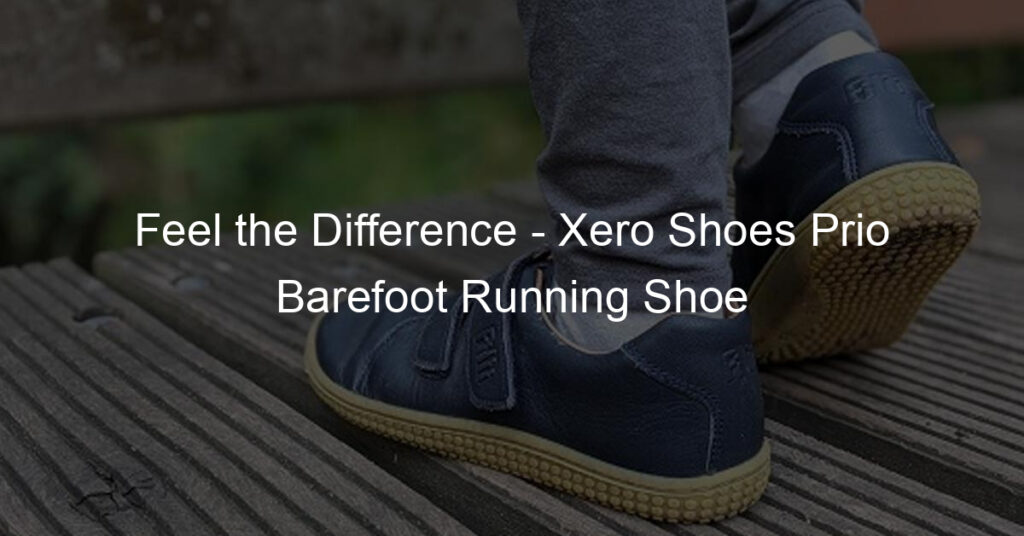Barefoot shoes are all the rage these days, but how tight should they be? Is there such a thing as too tight or too loose? Let’s take a look.
When it comes to barefoot shoes, there is no one-size-fits-all answer. The ideal fit will vary depending on the type of shoe, your foot shape, and how you intend to use the shoe. For example, if you are buying a minimalist running shoe to use for trail running, you will want a different fit than if you are buying a slip-on casual shoe to wear around town.
There are, however, some general guidelines to follow when shopping for barefoot shoes. First, you should make sure the shoe is comfortable. There should be no pinching or squeezing, and your toes should have plenty of room to move. Second, the shoe should be snug but not too tight. You don’t want your foot slipping around inside the shoe, but you also don’t want the shoe to be so tight that it cuts off circulation.
Finally, keep in mind that barefoot shoes tend to stretch out over time. So if you are between sizes, it is generally better to err on the side of a slightly tighter fit.
How Do You Choose the Right Size Of Barefoot Shoes for Your Feet?
There are a few things you’ll want to keep in mind before buying barefoot shoes:
– Make sure the shoes are long enough. You should have about a thumb’s width of space from the end of your longest toe to the front of the shoe. They should actually be foot-shaped.
– The shoes should be wide enough. Your feet should not feel cramped inside the shoe, and you should be able to wiggle your toes freely.
– The shoe should be snug but not too tight. You don’t want the shoe to be so loose that it’s constantly slipping off, but you also don’t want it to be so tight that it’s uncomfortable or cutting off circulation.
– Pay attention to how the shoes feel when you walk in them. They should feel comfortable and stable, without any rubbing or chafing. If they don’t feel good, they’re probably not the right size.
– Don’t be afraid to try on multiple sizes or brands until you find the perfect fit. Everyone’s feet are different, so what works for someone else might not work for you.
If you keep these things in mind, you should be able to find a pair of barefoot shoes that fit you perfectly and help you enjoy all the benefits of barefoot living!
How Tight Should Barefoot Shoes Be?
So, let’s dive deeper to understand how tight these shoes should be, taking a look at different aspects that affect the fit.
As a general rule, your shoes should be tight enough to stay on your feet without slipping, but loose enough to allow for comfortable movement and blood flow.
To get a more specific idea of how tight your shoes should be, consider the following factors:
– The type of shoe: Generally speaking, running shoes and other training shoes should be tighter than traditional running shoes. This is because they need to provide more support and stability during high-impact activities. On the other hand, casual shoes can be looser since they aren’t subject to the same level of stress.
– The material of the shoe: Shoes made from synthetic materials like nylon or polyester can be tighter than those made from natural materials like leather or cotton. This is because synthetic materials are less likely to stretch over time.
– The width of the shoe: Shoes that are too narrow can constrict your feet and cause discomfort. On the other hand, shoes that are too wide can cause blisters and other problems. The best way to find the right width is to try on a variety of shoes and see what feels most comfortable. Generally, barefoot shoes have a wide toe box. The reason for this is to allow your toes to spread out and grip the ground, which gives you more stability and control. Also, this is the natural position of your feet, which helps to promote better alignment and reduce stress on your joints. This way, your foot’s natural motion is not hindered, and you can avoid injury.
– The size of the shoe: It’s important to choose a shoe that’s the right size for your foot. If the shoe is too small, it will be uncomfortable and may even cause issues like blisters or bunions. If the shoe is too large, it will slip around on your foot and can be dangerous. To find the right shoe size, first, trace your foot on a piece of paper. Then, use a ruler to measure the length and width of your foot. Once you have these measurements, you can consult a size chart to find the right size shoe for you. These measurements are your foot size.
– The length of the shoe: It’s important to make sure that your shoes are long enough to accommodate your feet. Otherwise, you may experience problems like blisters and heel pain. You can check the length of the shoe by standing up and making sure that there is about a thumb’s width of space between your longest toe and the end of the shoe.
In general, barefoot shoes should be tight enough to stay on your feet without slipping, but loose enough to allow for comfortable movement and blood flow. The best way to find the right fit is to try on a variety of shoes and see what feels most comfortable. Keep in
– The type of activity: Some activities require tighter shoes than others. For example, you might need tighter shoes for running or playing tennis than you would for walking or standing. Barefoot running shoes, in particular, tend to be on the tighter side since they need to provide more support and stability.
Regarding zero-drop shoes, they are meant to have a more natural feel, so they should fit snugly but still be comfortable. Their heel-to-toe level should be the same, which helps promote better alignment and a more natural stride.
Once you’ve considered all of these factors, you should have a better idea of how should your barefoot shoe fit. Remember, the best way to find the perfect fit is to try on a variety of shoes and see what feels most comfortable.
What Happens if Your Barefoot Shoes Too Tight?
If your shoes are too tight, you may experience problems like blisters, calluses, and bunions. Tight shoes can also cause foot pain, ankle pain, and back pain. In extreme cases, they can even lead to deformities like hammertoe.
If you’re experiencing any pain or discomfort from your shoes, it’s important to see a podiatrist or other medical professional. They can help you determine the cause of the problem and find a solution that works for you.
In general, it’s best to avoid shoes that are too tight. However, if you must wear them, make sure to take breaks often and give your feet plenty of time to rest. Also, try to choose shoes that are made from natural materials like leather or cotton. These materials are less likely to cause problems like blisters and calluses.
If you’re having trouble finding shoes that fit, consider shopping at a specialty store or ordering custom-made shoes. There are also several companies that make shoes specifically for people with wide or narrow feet.
No matter what type of minimalist shoe you choose, it’s important to make sure that it fits properly. Otherwise, you may end up with pain, discomfort, and even serious injuries.
What Happens if Your Barefoot Shoes Too Loose?
The main purpose of wearing barefoot shoes is to improve your foot’s natural movement and function. When you wear shoes that are too loose, it can even hinder this process and cause several problems.
For one, loose shoes can rub and chafe against your skin, causing irritation, blisters, and even calluses. Additionally, they can throw off your balance and stability, putting you at risk for trips and falls. And finally, if you wear them for extended periods of time, they can actually weaken the muscles in your feet and ankles.
The fact these shoes have a wide toe box can be perfect for people who need more room for the big toe, but remember that this does not mean the shoes should be big all over.
So how tight should barefoot footwear be? The general rule of thumb is that they should be snug but not constricting. You should be able to wiggle your toes, but the shoe shouldn’t slip on your heel when you walk.
Should your size up for barefoot shoes?
In most cases, no. In fact, sizing up can actually cause more problems than it solves. If the shoe is too big, it will be more likely to rub and chafe against your skin. It can also throw off your balance and stability, putting you at risk for injuries.
Most minimalist footwear frankly runs true to size or even a bit small (half size smaller). So if you’re unsure of what size to get, it’s always better to err on the side of caution and go with the smaller size.
Of course, there are always exceptions to the rule. If you have wide feet or you’re between sizes, you may need to size up for barefoot shoes.
How To Start Walking In Barefoot Shoes?
If you’re new to barefoot shoes, it’s important to take things slowly at first. Start by wearing them for short periods of time, gradually increasing the amount of time you spend in them as your feet adjust. It’s also a good idea to start with a softer, more flexible shoe before progressing to a more minimalist design.
Additionally, be sure to pay attention to how your feet feel while you’re wearing barefoot shoes. If you experience any discomfort, pain, or other issues, stop wearing them and consult a doctor or podiatrist. With proper care and adjustment, you should be able to enjoy all the benefits of barefoot shoes without any problems.
Are There Any Special Care Instructions for Barefoot Shoes?
Barefoot shoes don’t require any special care beyond what you would normally do for your feet. Be sure to clean them regularly, and inspect them for any signs of wear or damage. If they start to feel uncomfortable or no longer fit well, you may need to replace them.
Additionally, it’s a good idea to alternate between different types of shoes to give your feet a break. For example, you might wear barefoot shoes during the day and switch to traditional shoes or sandals in the evening. This will help prevent any problems from developing due to overuse.
What Are Some Common Problems With Barefoot Shoes?
The most common problem people have with barefoot shoes is that they’re simply not used to them. It can take some time to get used to the feeling of walking without the support and cushioning of traditional shoes. Additionally, you may experience some minor discomfort or soreness as your feet adjust to the new movements.
People who suffer from foot problems such as bunions, flat feet, plantar fasciitis, or hammer toes may also find barefoot shoes to be uncomfortable. In some cases, these conditions can actually be aggravated by wearing minimalist shoes. If you have any pre-existing foot problems, it’s important to consult a doctor before making the switch.
Finally, If you have diabetes or another condition that affects blood flow to your feet, you should avoid wearing them.
If you’re thinking about switching to barefoot shoes, it’s important to do your research and make sure they’re right for you. Minimalist footwear is not for everyone, and if you have any foot issues or other medical issues, you should consult a doctor before making the switch.
How should barefoot sandals fit?
It’s important that barefoot sandals fit well, but it can be tricky to know how tight to make them. Here are a few tips:
– Make sure the sandals are tight enough that they won’t fall off, but not so tight that they’re uncomfortable.
– The straps should be tight enough to stay in place, but not so tight that they’re cutting off circulation.
– If you’re going to be doing a lot of walking in your barefoot sandals, make sure they’re tight enough that your feet won’t slide around inside them.
– If you’re unsure, err on the side of too loose rather than too tight. You can always tighten them up if they’re too loose, but it’s not easy to loosen them if they’re too tight.
Final Words
Although barefoot shoes are not for everyone, many people can find great success with them. These shoes can offer many benefits, from improved foot function to increased stability and balance. With proper care and adjustment, they can be a great addition to your wardrobe and now you know how should barefoot shoes fit. So if you’re thinking about making the switch, go ahead and give them a try!

